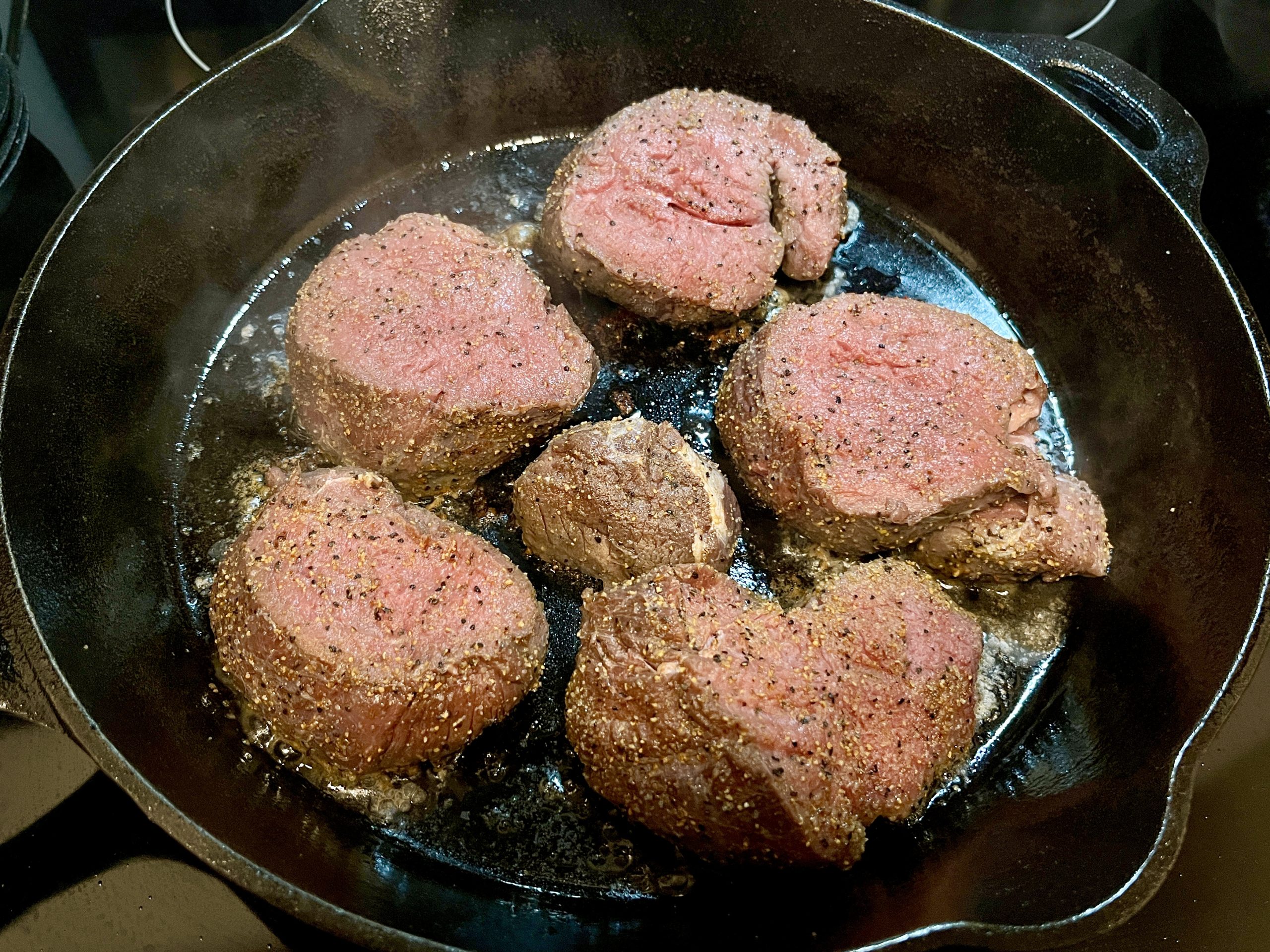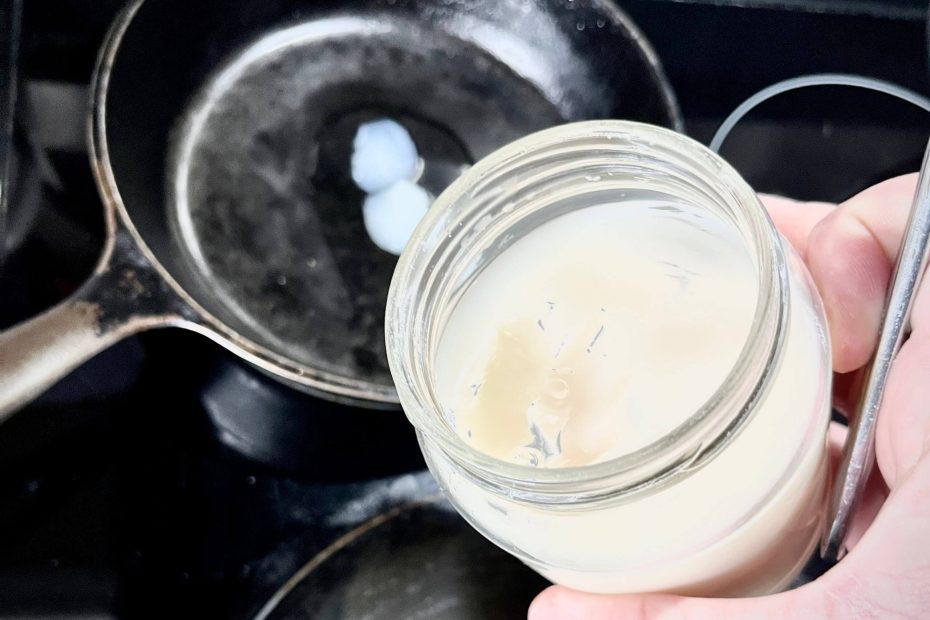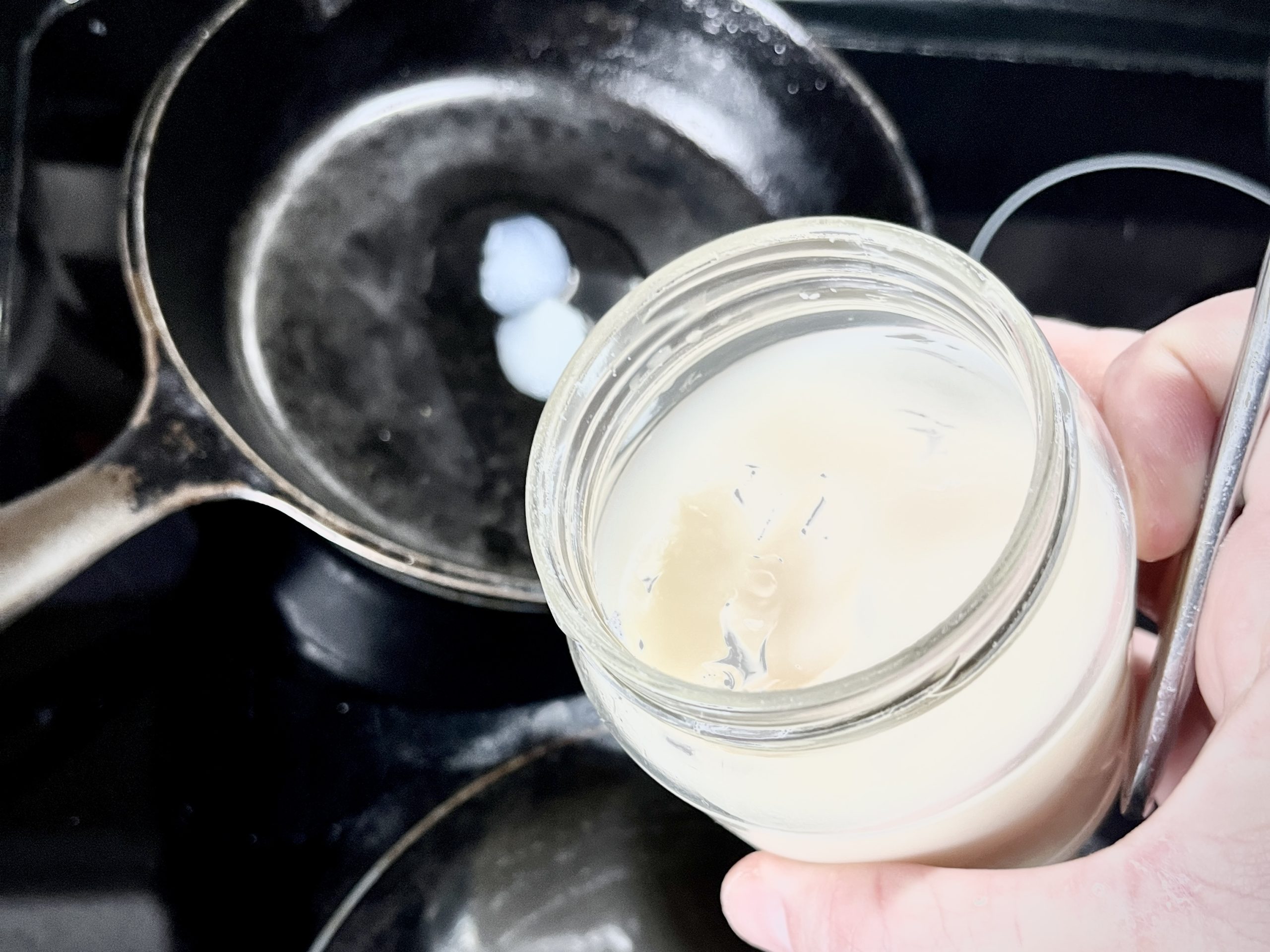
Bear season is almost here, and I’m getting excited about it. As the first big game animal I ever killed, bears hold a special place in my heart. And in my freezer: Bear meat is among the tastiest in North America.
In the meantime, I’ll make due hunting mini-bears. Raccoons continue to plague my neighbor’s dairy farm, and I’ll continue to help him with the problem. Raccoons are fun to hunt because you can utilize them in three ways. Their pelts are soft and luxurious, their meat is tasty, and their fat is plentiful.
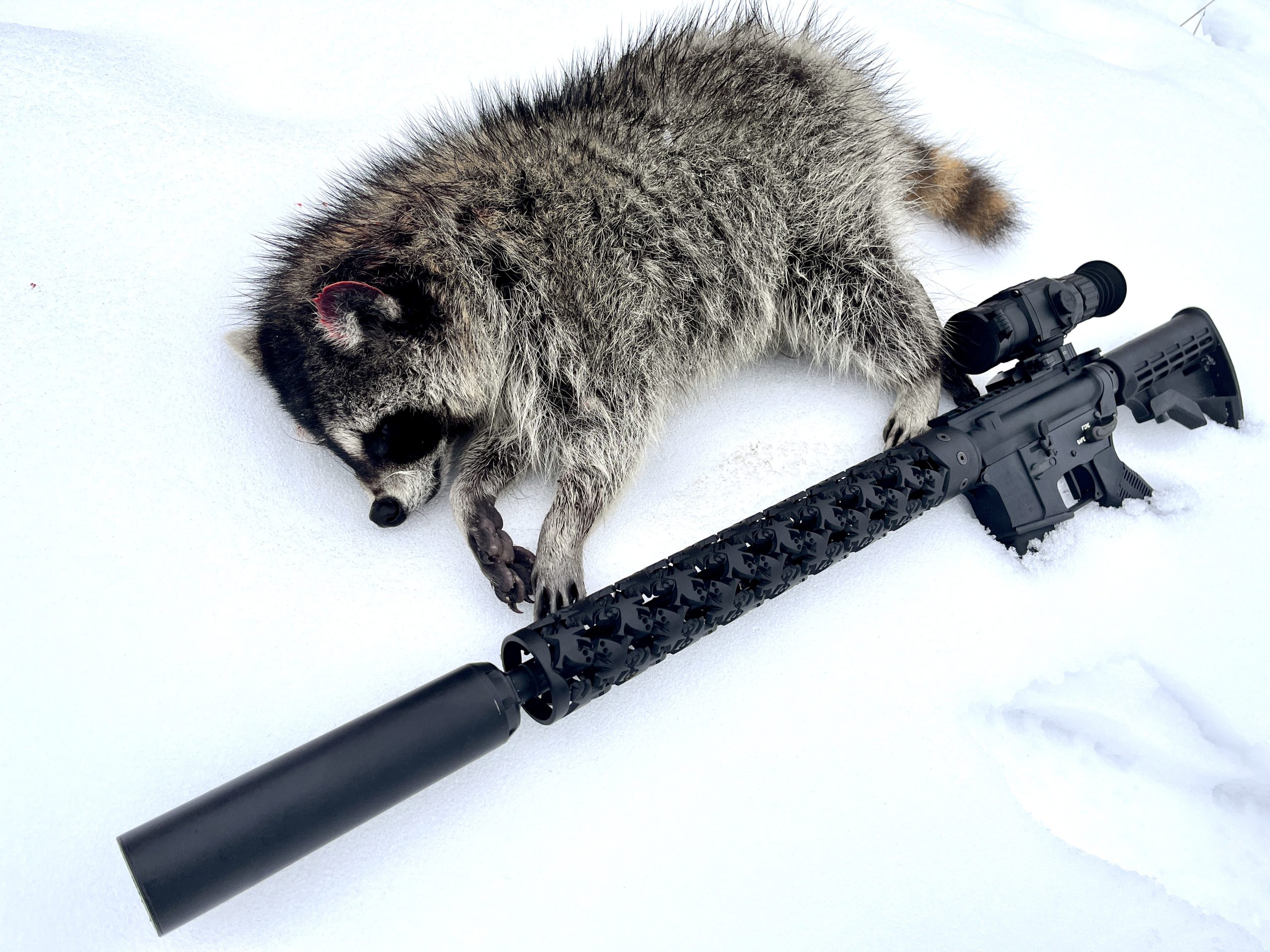
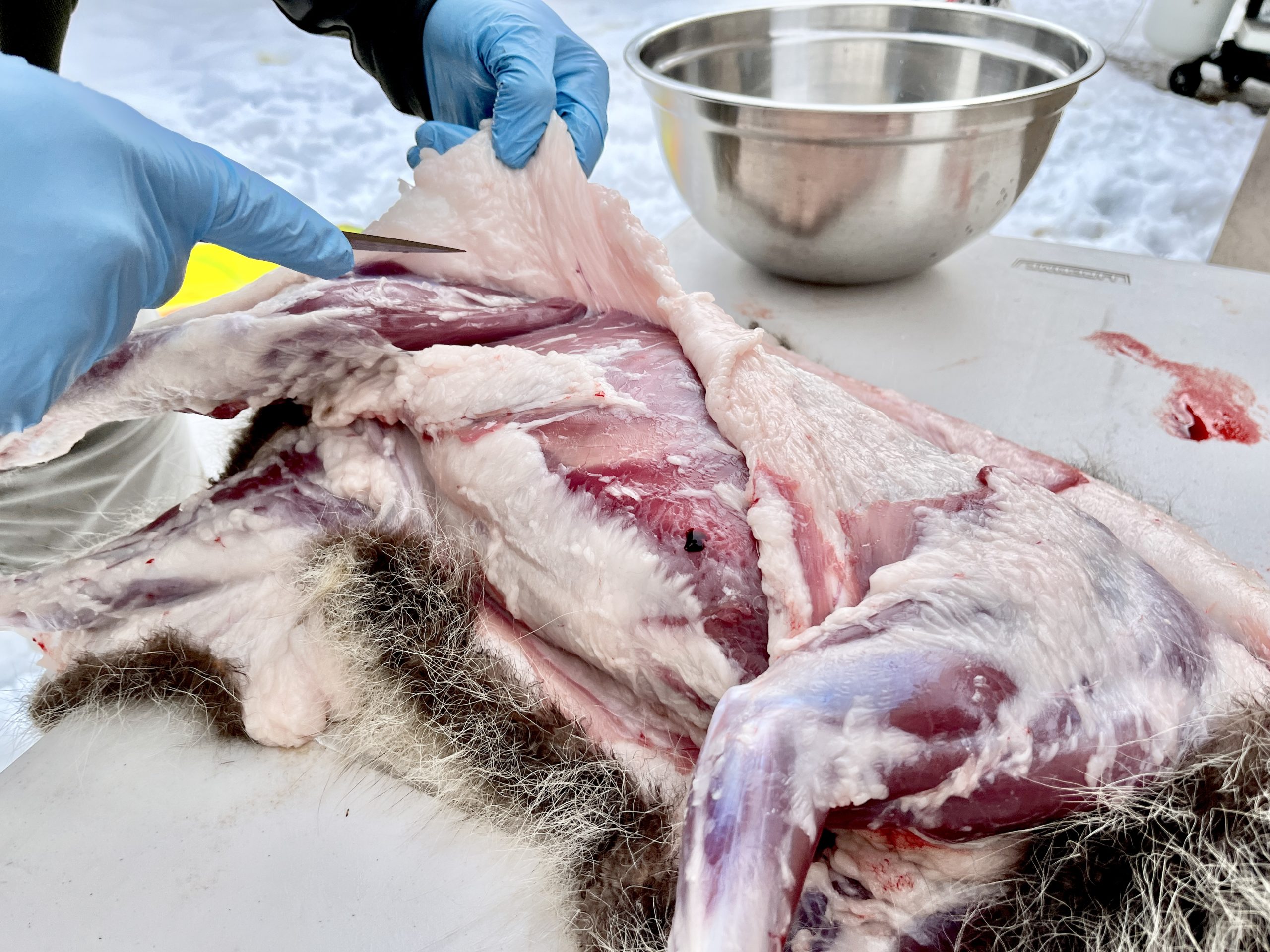
These raccoons eat my neighbor’s grain stores each day, and I realized as I was processing one that it had more fat (relatively) than any bear I’ve killed. So, why not try rendering the fat and cooking with it?
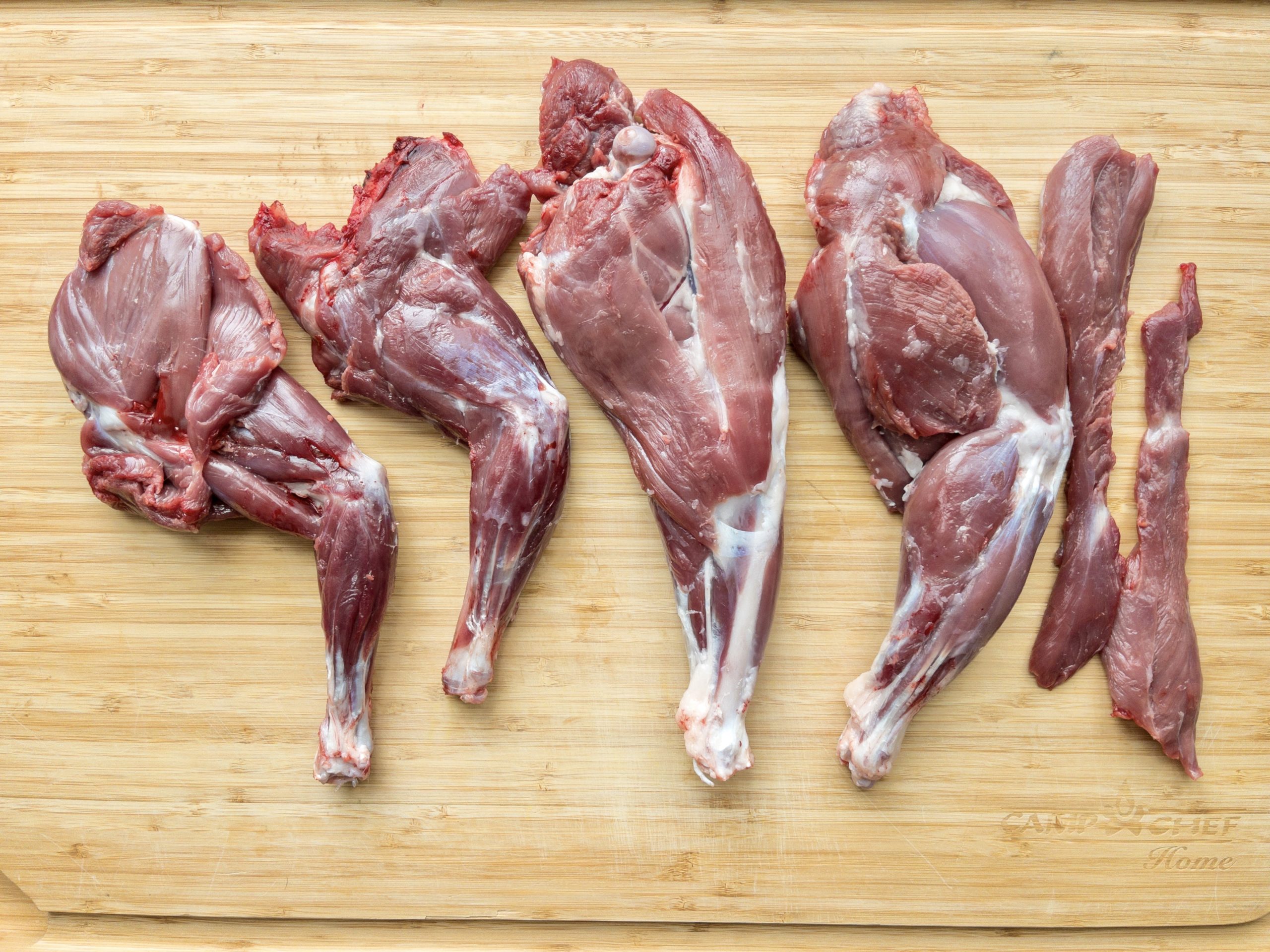
Rendering fat from animals results in oil that you can use for cooking or other uses. Bear grease is used for the flakiest biscuits and for waterproofing shoes. Lard is rendered pig fat, while tallow is rendered beef fat.
I’ve noticed that fats which are jiggly on the animal are good for cooking. Bear, pork, and raccoon fat are all soft and jello-like when you are butchering their meat, whereas deer and elk fat are much harder and more solid. Deer and elk fat results in a waxier fat that isn’t delicious.
Rendering fat is simple and leaves you with oil that makes delicious browned meat, flaky pastries, and reportedly awesome french fries.
Bears, raccoons, and even rock chucks (marmots), all produce fat that can be rendered. You’ll be surprised at how mild these fats taste. If you’re dubious about their flavor, try frying an egg first to test the flavor. You’ll find it’s tasty, but if you have any reservations, at least you can treat your gloves and boots with it.
The yield is excellent, too. I took just half the fat from one medium-sized raccoon and ended up with 16 oz of grease.
What You Need
- Fat from a bear, hog, raccoon, or rock chuck
- Water
- Pot
- Strainer
- Coffee filter (optional)
What You Do
Cut the fat free from the carcass as you process your meat. It’s ok if the fat has some blood and meat included with it — these become the cracklings that are highly regarded snacks when hot and fresh.
Cut the fat into small-ish cubes, about an inch wide so it has plenty of surface area.
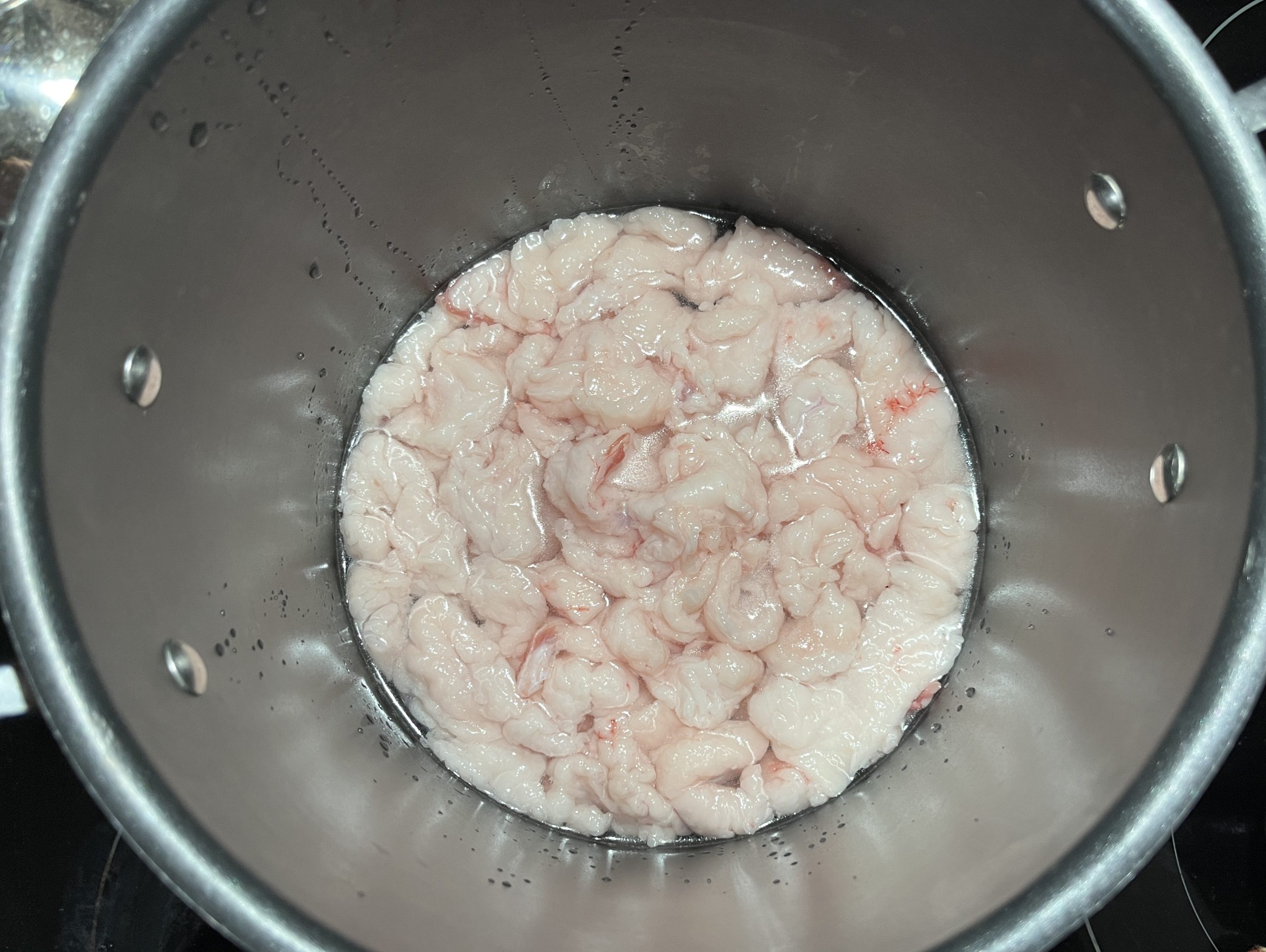
Place the fat in a pot. Here, I used a deep stock pot to reduce splatter getting on my cooktop, but you can use any pot; a Dutch oven over a fire is a popular choice in hunting camp.
Add a little water, enough to cover the bottom of the pot. The water helps distribute the heat until some of the oil comes out of the fat. The goal is to boil off the fat and leave only oil.
Bring the fat and water to a boil, then reduce to a simmer. You want the water to evaporate, but you don’t want the oil to burn, so don’t rush it, just let it simmer, stirring occasionally.
The longer you take to render it, the whiter the oil will be, but even yellower oil tastes just fine. You could take 30 minutes or 3 hours. Here I took about a half hour.
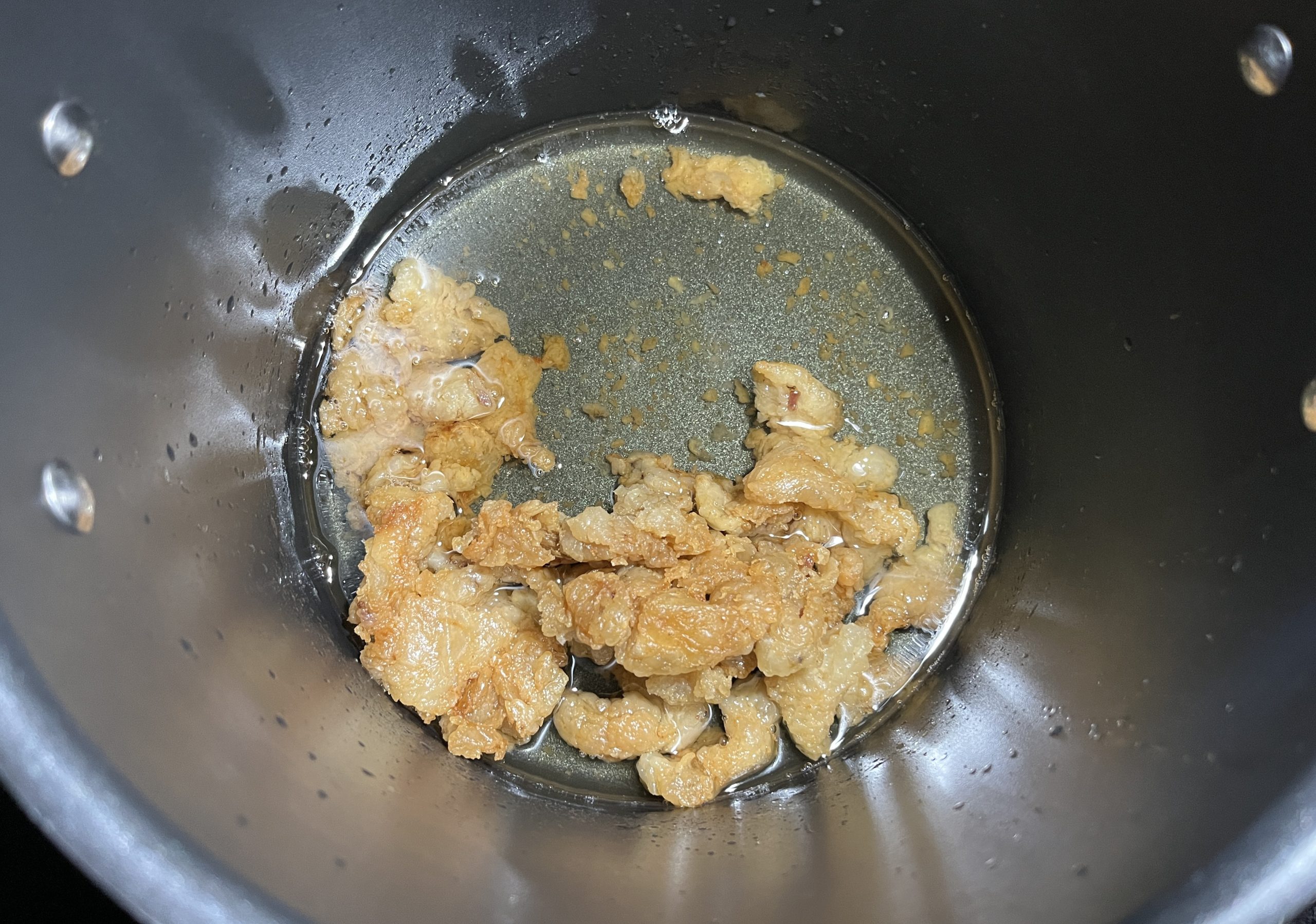
You’ll know the oil has all been rendered out of the fat when the cracklings are crispy. Remove it from heat while the cracklings are golden brown so that they don’t taint the oil with a burnt flavor.
Dogs love the cracklings, and you’ll like them too — just sprinkle a little salt or your favorite seasoning salt on them.
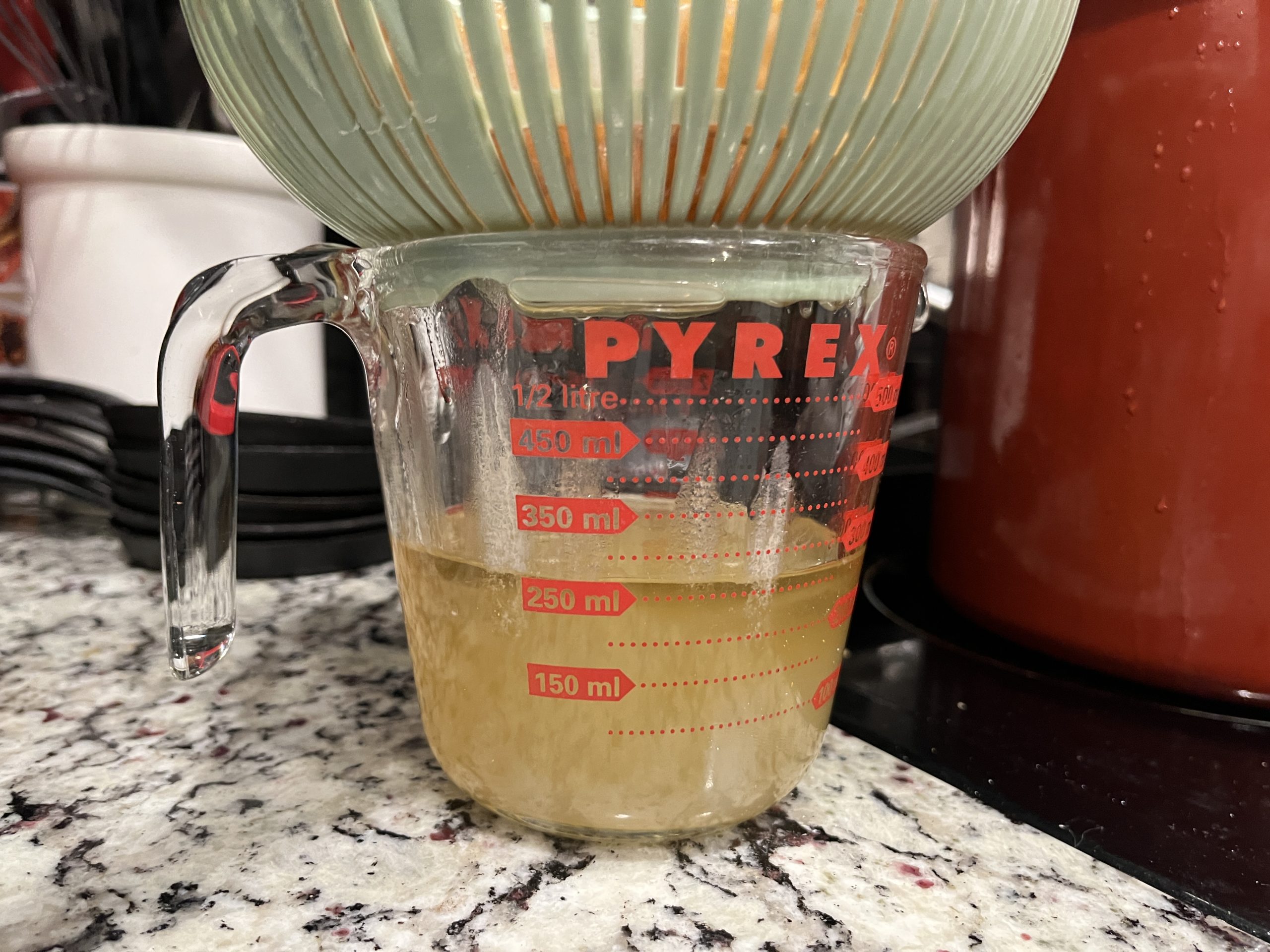
Carefully pour or spoon the oil through a colander into a glass container. The oil is extremely hot, so be careful. It’ll melt a plastic container at this point, so it’s best to use glass. At this point, you’re trying to remove the crackling crumbs from the oil.
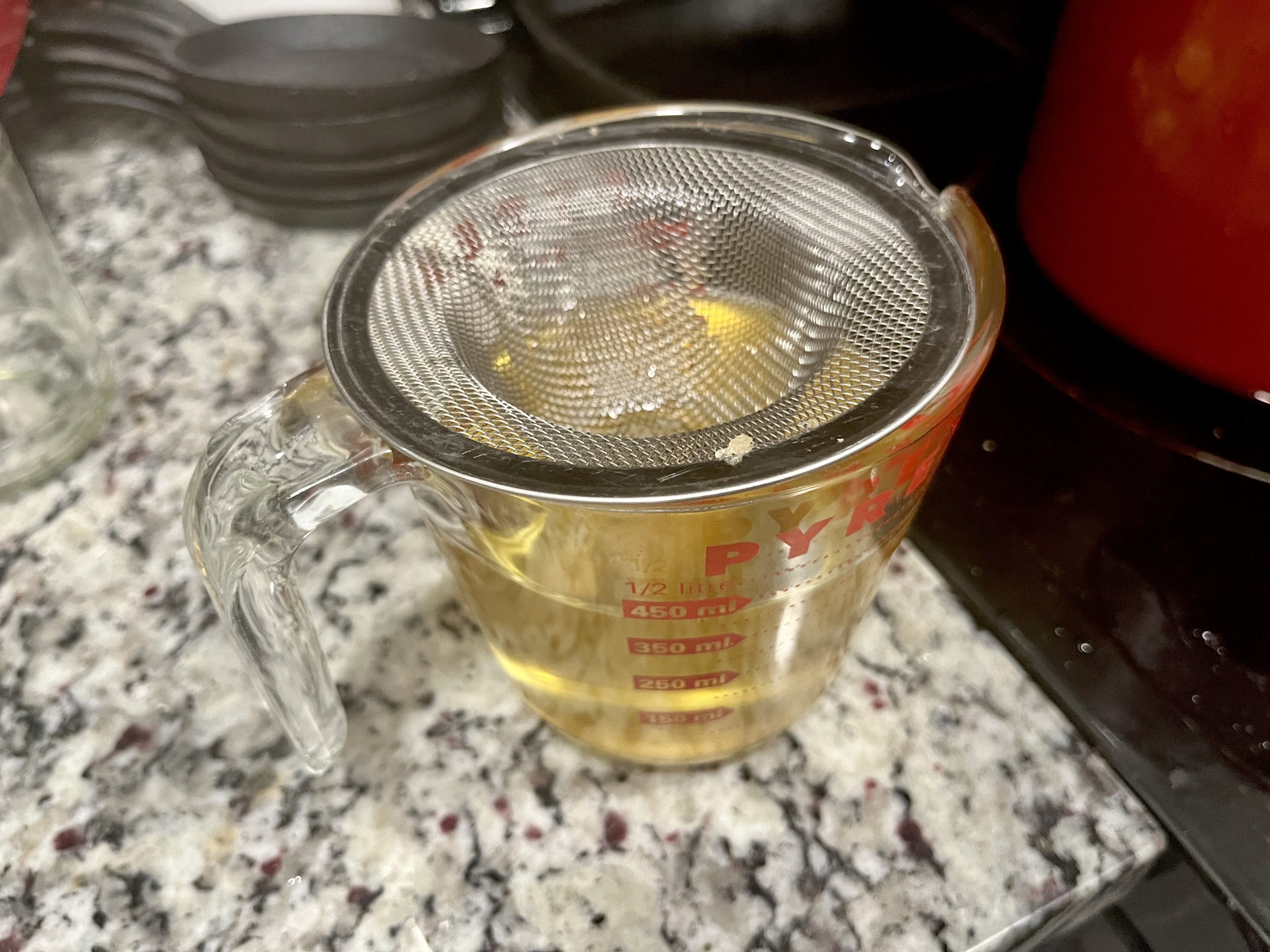
You can strain it a second time if you like. I’ve put it through a coffee filter to really remove all particles, but you’ll have to perforate the filter with a pin to actually let the oil through. I find that the coffee filter step is not necessary.
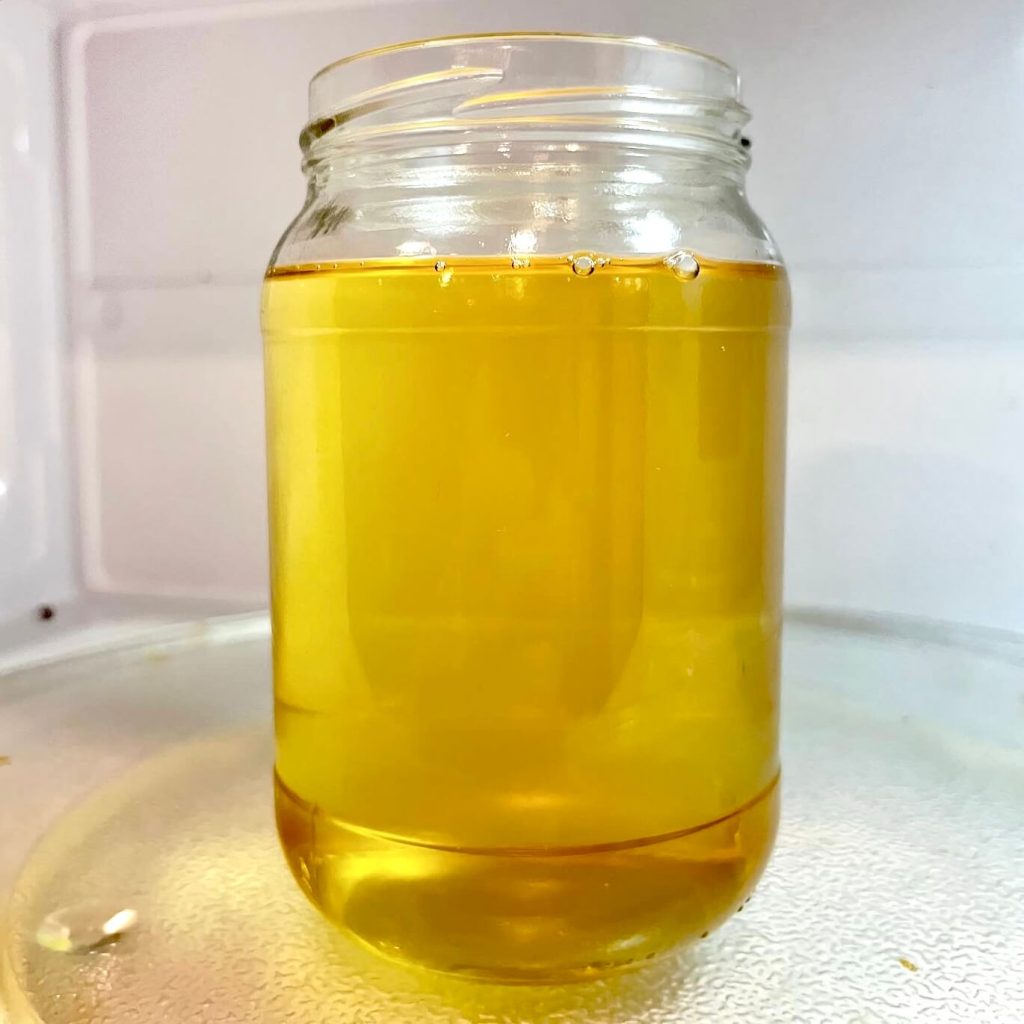
I like to store the oil in glass jars, but once it’s cool enough you could keep it in a plastic jar, too.
At room temperature, raccoon oil is not quite solid like coconut oil, so I keep it in the fridge so I can use a knife to scoop it out for cooking. It turns white when cooled. Bear grease is firmer at room temperature. Both will separate into thin oil on top and harder lard-like fat at the bottom of the jar over time, so just mix it up before use.

Raccoon-fried deer steaks come out of the pan with a deliciously-browned edge that makes you look like a much better cook than using vegetable oil. Use it anywhere you’d cook with oil or Crisco for delicious results.
